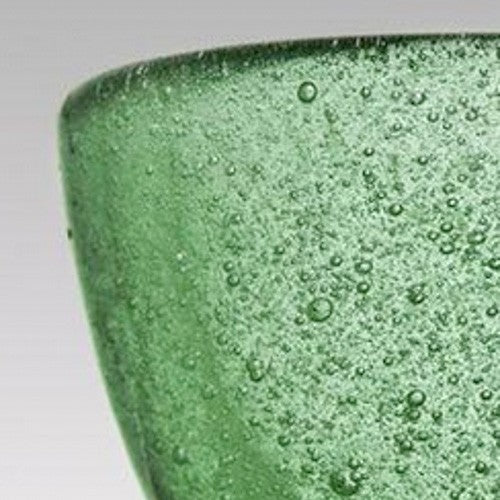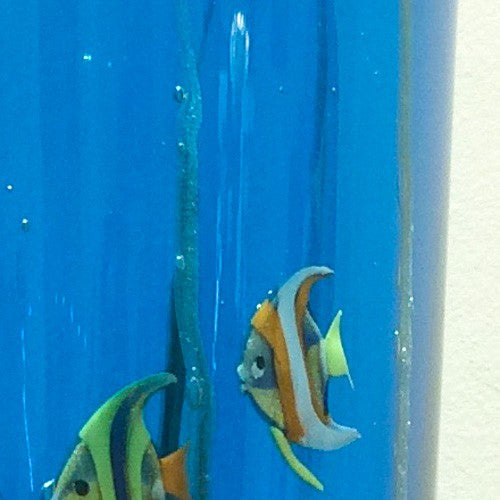A bollicine (bubble) glass can be considered one of the first examples of Carlo Scarpa ’s work at Venini .
Some of the items in this series were included in the sales catalogue at the beginning of the 1930s and partially presented at the 18th Venice Biennale (1932).
This type of glass derives its name from the presence in its core of numerous small air bubbles ( bollicine in italian).
This type of glass can be produced by injecting potassium nitrate, which when heated frees minuscule bubbles of carbon dioxide. This procedure is a development of the pulegoso glass technique, adopted by Martinuzzi between 1928 and 1930.
The distinguishing element of bubble glass is its watery appearance, due to the large amount of crystal in it.
Generally bubble glass, whose forms were drawn from Oriental art, was made in a very successful jade green, but also in light blue, dark green and amethyst. In particular, for wares dedicated to the dressing table the preferred combination was matching jade green with amethyst.
The same series could also be produced in pulegoso glass.
Credits: Lestanzedelvetro



Leave a comment
All comments are moderated before being published.
This site is protected by hCaptcha and the hCaptcha Privacy Policy and Terms of Service apply.